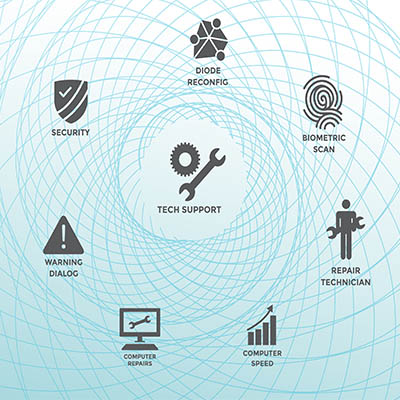Business owners love to point to time theft and quiet quitting as reasons for lost productivity, seeing them as a decline in work ethic. Unfortunately, they are not seeing the forest through the trees in a lot of cases. Let’s take a look at quiet cracking; or the slow, gradual breakdown of a knowledge worker’s mental and emotional well-being under constant workplace pressure. It’s not a sudden burnout, but a steady, silent erosion that’s happening more than you might think.
What Is Quiet Cracking?
Time theft and quiet quitting are both fundamentally a withdrawal of the suffering employee’s effort. Quiet cracking, on the other hand, is more of a withdrawal of the suffering employee’s personality. While they may appear productive at first glance, a cracking employee is actually anxious and cynical, with little motivation behind their actions.
Make no mistake: quiet cracking isn’t laziness. Far from it—it’s a defense mechanism against a culture and environment that tries to squeeze every last drop from a team member and still demands more.
So, what’s causing this tendency?
The Causes of Quiet Cracking
- Always-On Expectations – If the line between “work” and “life” is blurred, the constant connectivity it causes creates a state of perpetual stress for team members. This ultimately prevents the genuine rest and recovery of their psychological states.
- The Worship of Efficiency – Nowadays, businesses tend to prioritize metrics that represent efficiency and optimization. This push for constant productivity not only wears down employees, but it also prevents any creative thoughts from being shared.
- The Grindset Fantasy – Hustle culture (which basically just means overwork) establishes that professional achievement is the only acceptable source of self-worth. This can foment fears of inadequacy and slipping behind.
- Purposeless Work – In many cases, deadlines and established metrics have stripped the work experience of any personal investment. With no purpose or north star to follow, most workers will dread the workday.
Quiet cracking isn’t just an individual problem, either. It also introduces serious organizational consequences, such as:
- Lost Innovation – An anxious and overworked mind is going to be stuck in survival mode, meaning that your stressed employees are going to be less creative and innovative.
- Hampered Decision-making – An employee suffering from quiet cracking often rushes their decisions and overlooks certain details, impairing their overall judgement.
- Workplace Toxicity – When your team cracks, the workplace dynamic can break down, cynical and disengaged employees fighting more than they collaborate.
- Elevated Turnover – Does any of this sound like a workplace that anyone would want to stay at? A cracked employee is more likely to leave, leaving you with less institutional knowledge and the costs of hiring and onboarding a replacement.
How to Help Your Staff Resist Quiet Cracking
Solving quiet cracking requires a fundamental shift in how we approach work. It’s not about giving a pep talk like Tony Robbins, but about moving away from a model that prioritizes output over well-being. A healthy workforce is a business’ most valuable asset.
While business owners are right to be concerned about productivity, one of the most significant potential issues could be the slow disintegration of the very people who make their company run. It’s time to move beyond the symptoms and address the root cause of the problem.
For more great workplace-related content, visit our blog.







